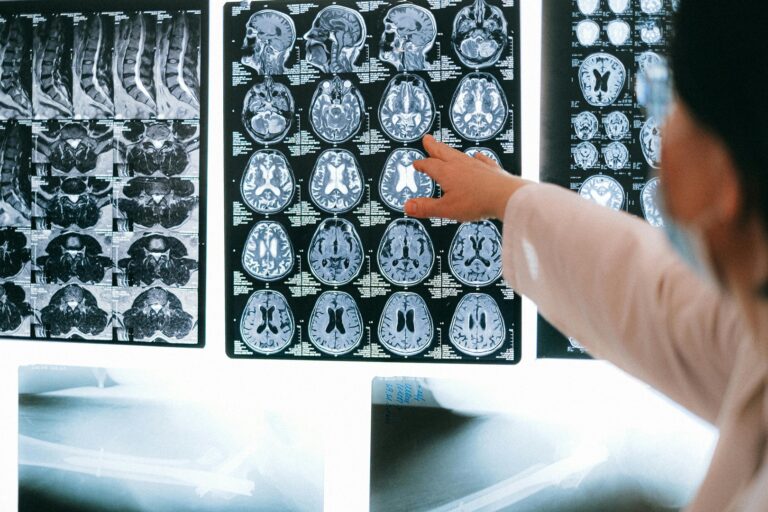An obese woman in her fertile years is at risk of developing IIH. Inversely, an obese patient with IIH who is able to achieve a reduction of 5-10% of total body weight, IIH, IIH-related symptoms, and many other medical conditions can go into remission.₁
Obesity is multifactorial: genetics, hormonal influences, environmental exposures, and chronic changes at the cellular level all contribute to this pandemic. Investigation into the pathophysiology of obesity has discovered permanent biologic adaptations in the body such as preadipocyte proliferation and acclimatization to rewarding neural dopamine signaling.₂ Preadipocyte proliferation induces hyperplasia (increased number of white adipose cells) and coupled with adipocyte hypertrophy, it has been theorized why weight loss is difficult to attain in chronically obese patients.₃ Habitual stimulation of the dopamine reward system causes overconsumption of food and therefore weight gain.₂ In these patients, simply telling them to eat less is not enough, they require a multidisciplinary approach.
Weight loss strategies should be initiated early in a patient with IIH if their BMIA value derived from the mass (weight) and height of a person. A healthy range is between 18.5-24.9, overweight is defined as 25-29.9 and obese… Click the term to read more is greater than 25 or has reported weight gain around the onset of IIH symptoms. Weight loss should be approached as you would handle any other chronic disease, escalating the level of treatment dependent on the response. No matter what field of medicine you practice in, opening the discussion of weight loss with your patient and knowing when to initiate referral to a weight loss program is just as important as providing care for other medical conditions.
During each visit of a patient in your office, the patient’s BMI should be noted. If it is greater than 25, the first step is to open communication about weight loss with your patient. It is important to remember that a patient with IIH, who is overweight or obese, can have complete reversal of this disease with just a 5–10% reduction of total body weight. As an example, if a patient who is diagnosed with IIH who is 200 pounds, loses 10-20 pounds, IIH symptoms can improve or be eliminated.₄
Discuss with your patient how losing weight can improve symptoms of IIH and emphasize losing some weight could be the only intervention needed to treat this condition. Invasiveinvolving the introduction of instruments or other objects into the body Click the term to read more procedures such as optic nerve sheath fenestrationA surgical procedure performed that allows cerebrospinal fluid to pass around the optic nerve freely Click the term to read more and ventriculoperitoneal shuntA procedure undertaken to prevent accumulation of excess cerebrospinal fluid in the brain Click the term to read more could be avoided with the loss of a few pounds. A great way to introduce this subject is to say “Miss Jones, can we talk about your weight today?” While being sensitive to the patient’s feelings and showing compassion, you can gain insight into the patient’s needs. Other questions that can provide a positive response is to ask “What does healthy eating mean to you?” or “How much time do you sit a day? Would you like to discuss ways to introduce physical activity into your daily routine?”₅
It is possible you may be the first medical provider to undertake the topic of weight loss with your IIH patient. Start by providing resources to support groups and recommend lifestyle changes such as calorie-restrictive diets and increasing physical activity. A referral to a nutritionist will work with your patient to be informed on food labels and develop an individualized dietary plan with realistic goals. These actions can be carried out no matter what field of medicine you practice in.
Referral to a weight loss program can help escalate the level of care of an obese patient. If all previous efforts are unsuccessful, these groups can implement the use of pharmacologic agents such as appetite suppressants and anorexiants. Some examples of these are: phentermine, orlistat, and lorcaserin. These therapies have been in use for over a decade and have shown to result in a 10-20% decrease in total body weight in conjunction with a calorie-restrictive diet.₆
Referral to a bariatric surgeon for consideration of weight loss surgery is the most invasive step in weight loss. Bariatric centers provide a comprehensive approach from behavioral therapy to a physical exercise program. Certain insurance companies require additional steps before the approval of surgery such as seeing a nutritionist for many months and proof of weight loss.
Candidates for weight loss surgery are those who have:
- A BMI of greater or equal to 40
- An excess of 100 pounds
- A BMI of greater than or equal to 35 with a co-morbidity related to obesity such as: hypertension, diabetes, sleep apnea, certain respiratory disorders, lipid disorder, cardiac disease, non-alcoholic fatty liver disease (NAFLD), and osteoarthritis.₇
A bariatric surgeon can provide many options to a potential candidate but the most common available surgical options are: gastric banding, sleeve gastrectomy, and a Roux-en-Y gastric bypass. Each technique offers its own risks and benefits and is considered on an individualized basis.
As medical professionals, we should not shy away from discussing weight loss in a patient who has a BMI of 25 or greater, especially in the setting of IIH. Showing compassion during these discussions can help your patient feel comfortable and may provide insight into their specific case.



